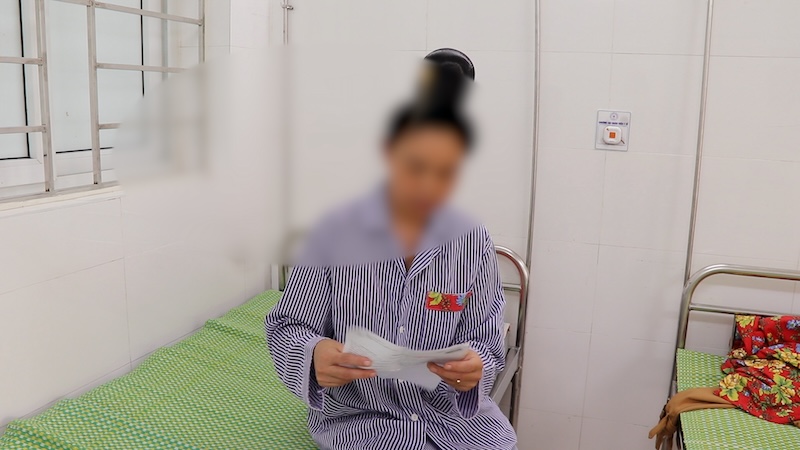This is a male patient over 60 years old in Lao Cai who was hospitalized in a state of fatigue and itchy skin. He had previously gone to the doctor but had not discovered the disease. Only when the itchy nodules spread did he go to Dang Van Ngu Hospital (Hanoi) for examination and testing. The results showed that he had a large liver failure, causing damage to liver tissue.
"Before, my family often ate fish salad, spring rolls, and raw vegetables. When I learned that I had a large liver disease, I was very surprised, because I thought that hand-processed foods would be safe. When I got infected with the disease, my body was very tired, now I'm scared, I don't dare to eat anymore," the patient shared.
Similarly, a female patient in Son La has just been diagnosed with acute liver failure. At first, she only showed signs of fatigue and a dull abdominal pain. When she went to a provincial hospital for examination, the doctor transferred her to Dang Van Ngu Hospital (Hanoi) for treatment.

The doctor said that my liver lump was quite large, so I was very worried. This disease requires long-term treatment, I was hospitalized for about 10 days. If not treated completely, the risk of liver cancer is very high. From now on, I am afraid of eating raw food, and when I return, I have to remind everyone in the house to eat cooked food and drink boiled water to prevent disease, the patient shared.

According to Dr. Tran Huy Tho, Deputy Director of Dang Van Ngu Hospital, liver disease in humans is transmitted mainly through the digestive tract. When eating foods or drinking water containing eggs or cell larvae, parasites will enter the liver tissue and bile duct system, developing into adult passages. Here, the plant continues to lay eggs, follow the waste path out into the water environment and spread to others.
The disease can be transmitted from sick people to healthy people through the digestive tract under a similar mechanism. Notably, most patients come to the clinic when the disease is already late, because symptoms such as skin itching are often mistaken for dermatological diseases.
Large liver failure in the early stages usually lasts 23 months, which is the time when the failure moves through the liver tissue to the gallbladder. Patients may experience symptoms such as mild fever, headache, fatigue, diarrhea; often enlarged liver, pain when pressed, and high white blood cell count in the blood, which can be up to 7080%.
The doctor warned that if not detected and treated promptly, large liver failure can cause many dangerous complications such as liver damage, gallbladder inflammation, cirrhosis, and even liver cancer.











